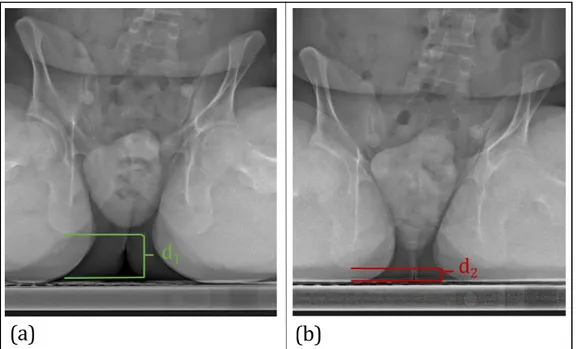Science Arts & Métiers (SAM)
is an open access repository that collects the work of Arts et Métiers Institute of Technology researchers and makes it freely available over the web where possible.
This is an author-deposited version published in: https://sam.ensam.eu Handle ID: .http://hdl.handle.net/10985/17075
To cite this version :
Pierre-Yves ROHAN, Aurélien MACRON, Jennifer DORIDAM, Alexandre VERNEY, Hélène PILLET - What is the influence of using generic material properties on the estimation of the pelvis sagging when sitting from a Finite Element model of the buttock region? - 2018
Any correspondence concerning this service should be sent to the repository Administrator : archiveouverte@ensam.eu
Corresponding author : aurelien.macron@ensam;eu
1
What is the influence of using generic material properties on the estimation of the pelvis
sagging when sitting from a Finite Element model of the buttock region?
P-Y Rohan1, A. Macron1, 3, J. Doridam1, A. Verney2 et H. Pillet1
1 : Institut de Biomécanique Humaine Georges Charpak, Arts et Métiers ParisTech, 151 boulevard de l’Hôpital, 75013 Paris, France
2 : CEA, LIST, Interactive Robotics Laboratory, F-91191 Gif-sur-Yvette, France. 3 : CEA, DRT, LETI, CLINATEC, 17 rue des Martyrs, 38054 Grenoble, France.
Keywords: Deep tissue injury; Pressure sore modeling; Biomechanical model, material properties calibration.
Ischial pressure sores are painful, slow healing wounds that develop during prolonged sitting. Its formation is associated with the high internal strains induced by the compression of the soft tissues under the ischium [1]. 3D Finite Element (FE) models have been developed to estimate internal strains in the subdermal soft tissues. Some authors have also investigated the influence of the material properties of the soft tissues [2]. However, the interval of variation of the parameters in these sensitivity studies are not necessarily representative of the variability of subgroups of population.
In this contribution, we investigate the influence of using the material properties of one given individual (generic material properties) as representative of a population. The generic material properties were obtained by Finite Element Updating to fit the experimental sagging of the pelvis of one subject when sitting. The 3D subject-specific FE model was generated from the combination of bi-planar Radiography, ultrasound imaging and optical scanner and is composed of the pelvis (rigid body) and 3 homogeneous layers representing the muscle tissue, fat and skin. The adipose tissue and the muscle layer were modelled as an Ogden quasi-incompressible hyperelastic material. The same material parameters were used to estimate the pelvis sagging of 7 healthy subjects. The estimated sagging was compared to the experimental one measured by computing the vertical displacements of both ischial tuberosities visible on the radiographs before and after sitting (Figure 1). For 5 subjects, the differences between both were below 1mm. For the two other subjects, the differences were 4 and 6 mm. These findings suggest that using generic material properties allow to reproduce the biomechanical response of the buttock when sitting for healthy subjects. The same approach could be applied to spinal cord injury population, which will allow to clarify the necessity of personalizing the material properties in models developed for this population.
[1] L. MacGregor, “Pressure , Shear , Friction and Microclimate in Context: a Consensus Document,” Wounds Int., pp. 1–25, 2010.
[2] V. Luboz, M. Petrizelli, M. Bucki, B. Diot, N. Vuillerme, and Y. Payan, “Biomechanical modeling to prevent ischial pressure ulcers,” J. Biomech., vol. 47, no. 10, pp. 2231–2236, Jul. 2014.
Corresponding author : aurelien.macron@ensam;eu
